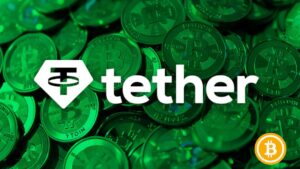TL;DR
- Tether plans to invest more than $1 billion in financial infrastructure, AI and biotechnology in the next year.
- The company has invested around $2 billion in these sectors in the last two years.
- It maintains an investment strategy that seeks the disintermediation of traditional finance and less dependence on large technology companies.
Tether Holdings Ltd., the issuer of the world’s largest stablecoin, USDT, is preparing to make significant investments in the next 12 months.
Paolo Ardoino, CEO of Tether, has announced that the company plans to allocate more than $1 billion to various operations, focusing on alternative financial infrastructures for emerging markets, artificial intelligence (AI) and biotechnology.
This decision fits into an investment trend that has seen Tether spend around $2 billion in these sectors over the last two years.
Tether‘s investment team, made up of 15 people, evaluates hundreds of proposals monthly, mainly from startups.
Ardoino highlighted that Tether is interested in technologies that promote financial disintermediation and reduce dependence on technology giants such as Google, Amazon and Microsoft.
A notable example of his investments is his $200 million stake in Blackrock Neurotech, a brain-computer interface company, and his backing of Northern Data Group, a data center operator.
Tether‘s financial capacity has been bolstered by its investments in US Treasuries and other securities, allowing it to generate billions in profits, especially in the current high interest rate environment.
The company maintains 100% of its reserves, plus an additional 6% cushion drawn from its profits, to ensure smooth USDT redemptions.
Tether expansion beyond stablecoins
Despite previous regulatory concerns and legal challenges, the company continues to demonstrate its strength and resilience.
In the first quarter of 2024, the company reported profits of $4.5 billion, according to its published statement.
Although these statements are not complete financial audits, they do provide a glimpse into the strength of the assets backing USDT.
In an effort to diversify and expand its business, Tether has split into four divisions focused on finance, data, Bitcoin and energy mining, and education.
Additionally, it plans to launch a platform later this year that will allow companies to issue bonds and shares in the form of digital tokens, as well as support the issuance of central bank digital currencies.
The company’s investment policy differs from that of traditional venture capitalists in that it does not focus solely on companies that expect to reach certain profitability targets within one or two years.
Instead, Tether invests in projects that it considers extremely interesting and aligned with its strategic vision.
This approach has led Tether to support initiatives in biotechnology, an area that has seen a decline in investments from other players.
Ardoino emphasizes that Tether is not a classic venture capitalist; They invest in things that matter to them and follow their own strategy, always seeking to innovate and strengthen their position in the global market for cryptocurrencies and emerging technologies.











